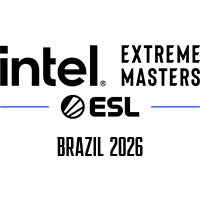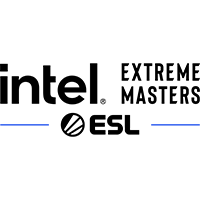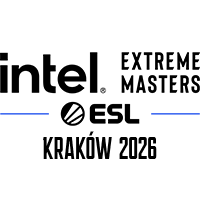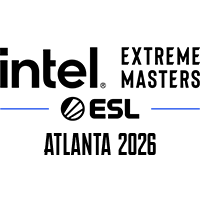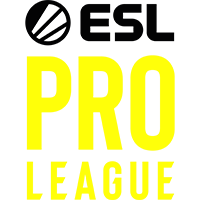When it comes to the biggest hyped moments in Dota 2, we generally don’t think about the laning phase or killing a creep – we think about those big team fight moments. Because really – when people dream about Dota 2, they’re dreaming about team fighting.

That applies to new and veteran players alike. So, as a new player, how can you get better at team fighting? What goes into a good team fight? And how should you balance team fighting in Dota 2 with all the other parts of the game? Let’s walk through a team fight, how to improve your in-game awareness, and how to make those next level plays!
What is the Difference Between a Gank and a Team Fight in Dota 2?
It’s worth starting a discussion on team fighting by providing a clear distinction between a gank and a team fight.
A “gank” is a term that refers to the concerted effort by a few members of a team take to kill a specific enemy hero. Though they can often spiral into a team fight, a clean gank will play out quickly and easily; ambush an enemy hero, kill them almost instantaneously, and get out before the enemy team can counter. Ganks can be done for a number of reasons, but the most common is to slow down the item and level progression of a specific enemy. It’s normally done by mid heroes in the start of the game on the enemy carry.
Unlike a team fight, a gank does not require a majority of players to be involved. This allows core players to continue to farm and gain experience while their teammates can seek out kills, allowing them to amass a resources lead over the enemy.
A great example of a gank can be found here (at the 14:40 mark) in the TI8 game between Virtus Pro and OpTic Gaming. During the laning phase, four members of OpTic rotate top in order to kill VP’s carry player. They manufacture a four-on-one situation by using Smoke of Deceit, use their spells to lock down Storm Spirit, kill him without incident and scatter across the map shortly thereafter. All the while, their carry (Juggernaut) farms bottom.
For comparison’s sake, a team fight can be found at 32:40. There were eight kills during the teamfight with all ten players involved.
While the line can sometimes get blurry between the two, as a general rule of thumb team fights simply last longer and involve more people. As a result, they can more directly and more immediately impact the game but come at a much greater risk.
When Should I Team Fight?
Team fighting is an important part of Dota 2 but, in reality, simply winning them isn’t necessarily going to translate to victory. Sure, killing enemy heroes often ends up being the final step to breaking high ground, but getting the better of a three-for-four trade is rarely a big victory in its own right.
Indeed, there are two things to consider when pondering whether to call for a team fight; risk vs. reward, and return on time investment.
Balancing Risk vs. Reward in Dota 2 Team Fights
Weighing the risks of an unsuccessful team fight against the rewards of a victorious team fight is the key to determining when to start a skirmish.
Take a look back at the aforementioned OpTic vs. Virtus Pro team fight (at the 32:40 mark).
The potential rewards for OpTic here were huge. With the top lane pushed deep into VP territory, taking out two or three heroes would have guaranteed an easy Roshan for OpTic. Taking out more than that would have allowed them to push high ground and take at least one lane of barracks.
On the flipside, the risks turned out to be fairly low. While VP won the fight in emphatic fashion, killing all five members of OpTic and gaining 5,000 gold in net worth, it wasn’t able to convert those kills into anything more, taking zero towers and leaving Roshan unharmed.
Though the gambit didn’t pay off for OpTic, it was a low-risk, high-reward play that was worth making.
Oftentimes in lower-level pub games, teams will look to fight but won’t necessarily do so at a time where it leads to anything bigger. Worse, they will sometimes work in the opposite direction, looking to pick fights in situations where a messy engagement can open up game-winning opportunities for the enemy.
Being able to accurately measure the risks of losing a team fight with the rewards of winning one is key to gaining a substantial gold and experience lead on an enemy team.
Return on Time Investment
Time is a resource that is easy to lose and impossible to gain in both Dota 2 and life in general, and if one team is spending time on getting gold and experience and the other isn’t? Well, that’s going to add up.
For carries like Antimage, Ursa and Alchemist, 60 seconds translates to hundreds of gold from killing creeps and neutrals. Repeat that two, three or four times in a game and it becomes thousands. Missing out on thousands of gold means missing out on items and missing out on items, in turn, means they are not able to farm as efficiently as the game progresses.
It’s a slippery slope and teams should not be quick to sacrifice guaranteed gold in hopes of larger returns. Being able to accurately predict whether an engagement is worth the resources spent is critical when it comes to whether to engage or not. It’s all about risk versus reward.
Unfortunately, this is much harder to do. Every game of Dota 2 is different and there are just too many variables to offer a definitive guideline on when to tell an entire team to go on the offensive. Just make sure to remember that the before, during and after of a team fight comes at a very real price.
The Steps of a Dota 2 Team Fight
So you’ve weighed the risks, you’ve rallied your team and you’re ready to take down some enemies…what next? Allow us to give you the step-by-step on how a Dota 2 team fight goes down.
Step 1: Establish Vision
This might seem like a no-brainer but the most important part of beginning a team fight is vision. Dota 2 has lots of different spells and items that allow heroes to pounce on foes. And with no areas to hide, a team fight can happen anywhere. Knowing enemies’ locations is key to maximizing the impact of your spells and mitigating those of the enemy.
There are many ways to gain vision, including planting Observer Wards, scouting ahead with an invisible hero or using certain spells like Clockwerk’s Rocket Flare or Zeus’ Thundergod’s Wrath. Knowing where enemies are (and where they are relative to one another) both prevents a preemptive sneak attack and sets you up to perform well in step 2.
Step 2: Initiation
“Initiator” is a character class unto itself in Dota 2, right alongside carry and support. Initiators are defined by their AOE disable abilities. Examples of strong initiation spells are Tidehunter’s Ravage, Faceless Void’s Chronosphere and Axe’s Berserker’s Call.
A well-executed initiation provides a bit of burst damage, allows teammates to safely approach and opens up the opportunity to take out low-health targets before they can counter.
Step 3: The Counter-Initiation
You shot your shot at the enemy team, but they almost certainly have something to shoot in return. Now that your primary initiation spells are down, the enemy team has the opportunity to use theirs and from there, all hell will break loose.
Depending on the hero lineups of both teams, the difference in farm and experience, and how Step 2 actually went for either side, the counter-initiation may be organized, disorganized or non-existent.
Step 4: Fighting and Kiting
Following Steps 2 and 3, most spells on both teams will be down. Stragglers from either side will trickle in and carries will have their opportunities to shine as they chase opponents and use their right-click attacks. Some players will be running, looking to avoid damage. Others will be on the chase.
Step 4 ultimately serves as the final straw in terms of determining which team “won” the fight. Now comes the fun part – the end of the fight.
Step 5: Dispersion
With the fight essentially done, all that’s left is for the losing team to run away and the winning team to decide if chasing is worth the time. The fight is effectively over at this point, with the winning team able to set its sights towards other objectives.
What Does this Look Like in Practice?
So what do these five steps look like in practice, then? Let’s take a look at the first team fight in this video; the battle which set up Team Liquid’s first-place finish at The International 2017.
Step 1
Team Liquid knows that Newbee is in the process of taking Roshan. They gain vision when Juggernaut uses Blade Fury and enters the pit, which gives them sight of four different Newbee heroes.
Step 2
Though the Juggernaut was the first hero to enter the fray for Team Liquid, the initiation comes when Dark Seer uses Wall of Replica and Vacuum. This momentarily disables Newbee, deals damage through the illusions and sets up a massive Chain Frost for Lich.
Step 3
Newbee attempts to counter-initiate back with Sand King’s ultimate and Shadow Shaman disables. Unfortunately, when Liquid’s Necrophos teleports to the shrine, Sand King finds his Blink Dagger disabled by the Radiance burn, which results in Epicenter being wasted. Shadow Shaman, meanwhile, is locked in place by Earth Shaker’s stuns. This results in Newbee taking the full brunt of Chain Frost, Juggernaut’s Omnislash and Earth Shaker’s full arsenal of spells.
Step 4
Newbee’s Venomancer re-enters the fray and deals some damage, but is ultimately forced back by Juggernaut. Necrophos attempts to kill Venomancer with his ultimate, Reaper’s Scythe, but his with no avail. The ultimate doesn’t do the trick thanks to Venomancer having ate the Cheese a split second before being caught.
Step 5
Sand King and Venomancer tried to run after their teammates were killed, seeing that the fight didn’t end in their favor. The Venomancer was killed while trying to run from the teamfight. The Sand King managed to teleport away which ended the whole engagement.
Not all fights will play out as perfectly as this one did. It is a great clip for showcasing important steps in terms of setting up, initiating, and executing a team fight.
Dota 2 Team Fighting Tips
Don’t assume your team is with you. This is something that happens in any team-based game. One person will not be listening to the team. One person will feel like they are good to fight and run in without the team. Think of the classic Leeroy Jenkins move from World of Warcraft. They will run in, die, and then the team will yell at them. If you’re going to look for a fight, let everyone know beforehand.
Know your role. It is important to know how your character fits into your team’s lineup. If you’re playing as Rubick, does your team need you to initiate team fights with Telekinesis? Or hang back and deal damage from afar with stolen magic? Find out what your team expects of you, and deliver.
Don’t demand your entire team be there for every engagement. There are plenty of carry players out there that have tunnel vision. They will tend to focus on their own farm and ignore their teammates. That said, remember the “return on time investment” idea. An equal trade-off that allows the carry to comfortably farm elsewhere is better is best case scenario early on.
Fight dirty. You know what’s better than a five-on-five team fight? A five-on-four team fight. Take advantage of any numbers advantage. If an enemy hero died or is otherwise unavailable, try to take advantage of the situation. A 4 v 5 fight is easier to win than a 5v5 fight.
Don’t look for team fights if you’re far behind. Some Dota 2 players have a gambling addict mentality. “Oh, I lost that team fight…so I need to do it again and win to make up the difference!” Comebacks are very possible. The safest option if you find yourself playing from behind is to look for ganks to slow down the game.

